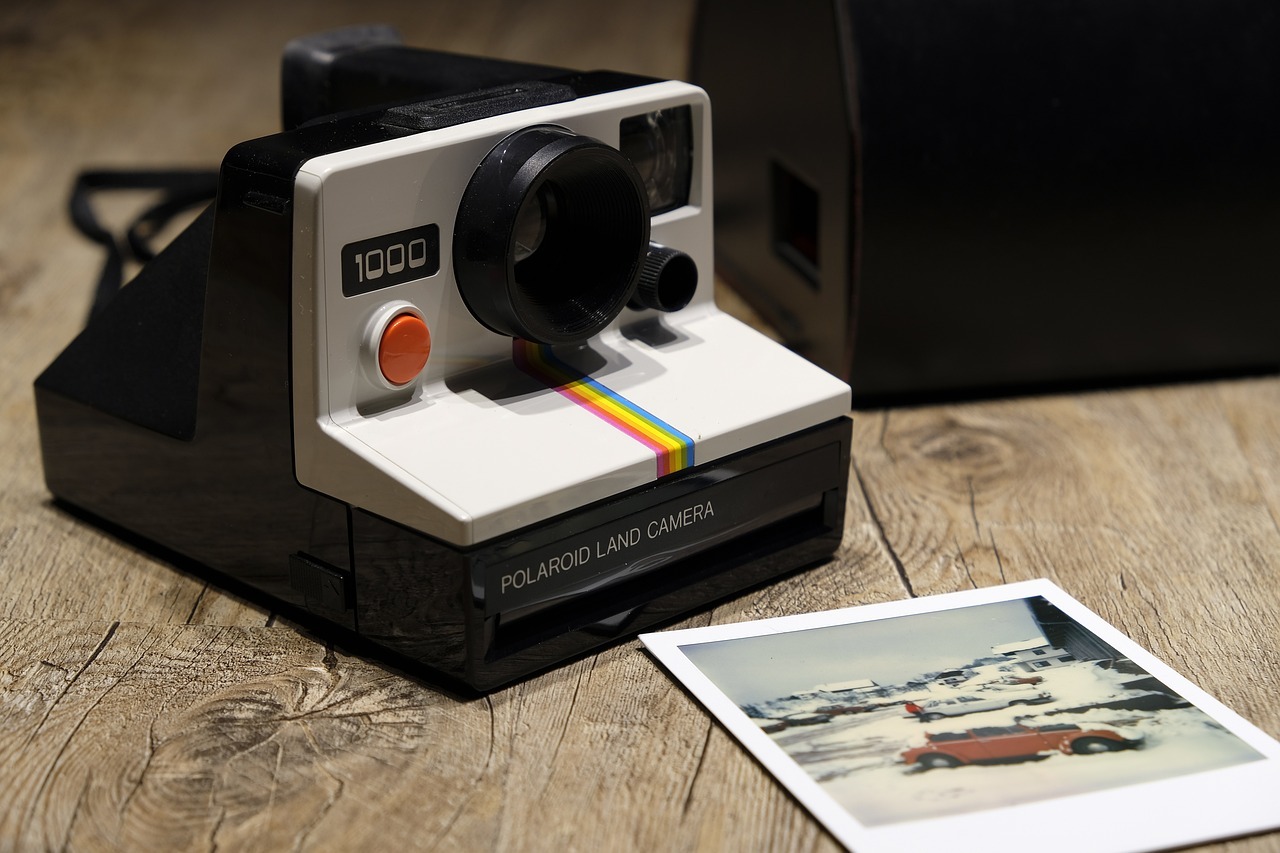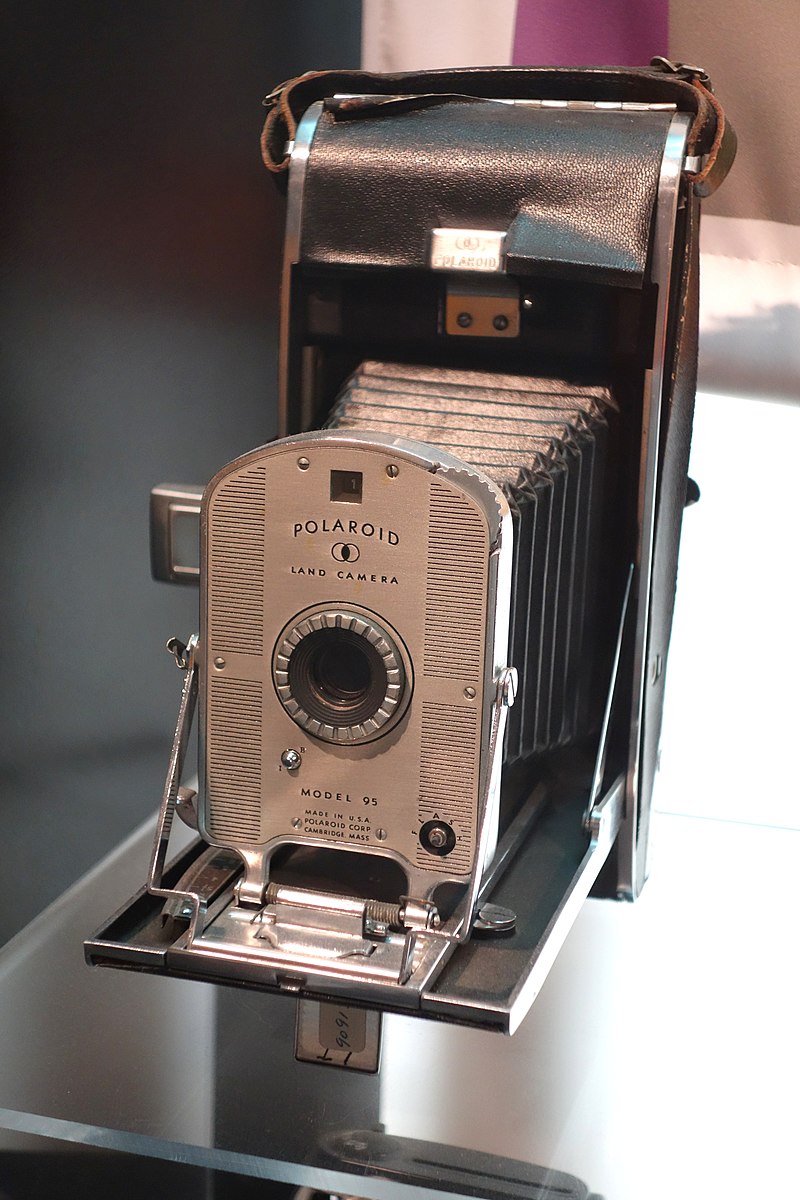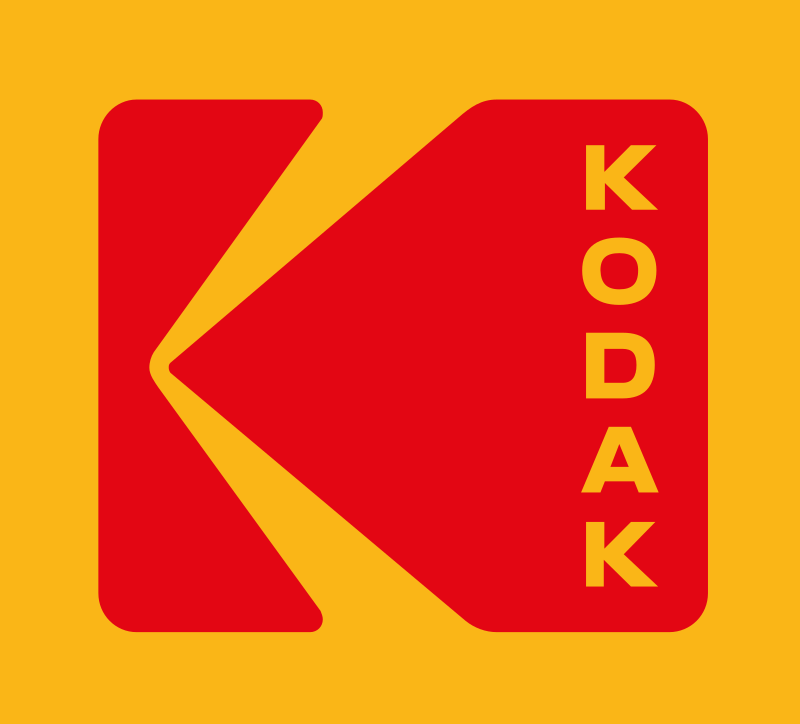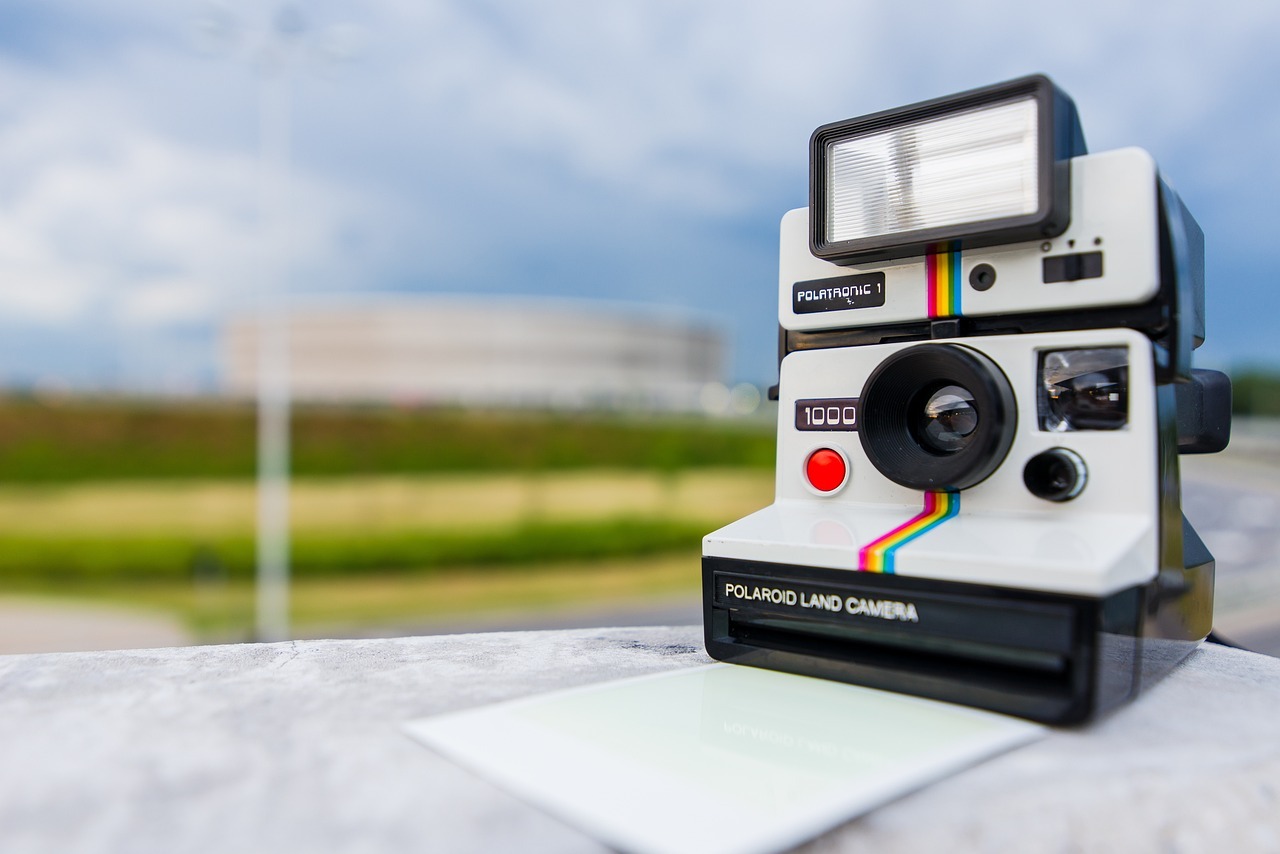There have been different types of cameras that were developed and sold over the years, but there is one particular type of camera that experienced a resurgence in popularity after the late 2000s, and this is the instant camera.
The instant camera is a type of optical instrument that uses self-developing film so that physical photos of the images captured would already be available for the photographer in an instant. Before instant cameras, photographers would have to take the film of the camera to a photo developer or develop the film themselves to produce physical photos for their customers or clients.
With the instant camera, photographers can already get physical photos of the sceneries, locations, and people that they captured. There are a few brands of instant cameras today, but one of the most notable is Polaroid. To know more, here are the nostalgic origins of the Polaroid instant camera.
The Model 95 Land Camera
The origins of the instant camera can be traced back to the invention of diffusion transfer reversal or DTR by Hungarian chemists Andor Rott and Edith Weyde. The invention allowed direct positive photography, which wasn’t impossible in the 1930s because cameras back then produced negative film, which didn’t show the true colors of the images that were captured using the camera. With diffusion transfer reversal, Rott and Weyde believed that producing or developing photos would be much easier since they don’t have to turn negative film into positive film anymore.
The idea of creating a commercial camera that is capable of diffusion transfer reversal is credited to Edwin Land, an American scientist who introduced the first commercial instant camera in 1948. The camera was called the Model 95 Land Camera, which was manufactured by the camera company Polaroid from 1948 to 1983. [1] The camera is named after its inventor, although the “Land” on the camera’s name was dropped in 1982 after Edwin Land’s retirement from Polaroid.
Polaroid’s Origins
Polaroid was a company that was founded by Edwin Land and businessman George W. Wheelwright III in 1937 in Cambridge, Massachusetts. The name of the company is believed to have come from the first product that Polaroid produced and sold: polarized sunglasses. The idea to sell polarized sunglasses was credited to Edwin Land, who conducted self-guided research in light polarization. After completing his freshman year at Harvard University, he left in order to pursue his goal of opening a business where he could sell polarized sunglasses. However, he would later return to Harvard to complete his research.
During World War II, Polaroid designed and produced products that could be used by the military, which included protective goggles for military dogs and an infrared night vision device. Later, Polaroid would produce polarizing products for Kodak, a company that also specializes in film and cameras.
When the Model 95 Land Camera was introduced in 1948, it was Edwin Land who gave the first public demonstration for it, where he showed how the film can be removed manually after capturing an image. The positive print of the film can be peeled from the negative print. Land would improve the design of the Land Camera in 1972 with the release of the SX-70, which automatically ejects the film after the user captures an image.
Polaroid vs. Kodak
Kodak launched their own line of instant film cameras in 1976. Polaroid then sued Kodak, as they believed that Kodak stole the patented instant photography process created by Edwin Land. Between 1977 and 1978, the sales of instant cameras produced by Kodak and Polaroid rose, and there were about 10.3 million instant cameras sold in 1977 and 14.3 million in 1978. The rise in sales and popularity of instant cameras during that time can be attributed to the controversy surrounding Polaroid’s lawsuit.
After ten years in federal court, Polaroid won the lawsuit, and they asked for $12 billion for infringements of the company’s patent by Kodak. The court then ordered Kodak to cease its production of instant cameras. Kodak would also pay $909.5 million of the $12 billion that Polaroid asked for in court. [2]
The Decline of Polaroid
In 1982, Edwin Land was forced to retire as chairman of Polaroid. The exact reasons for Land’s forced retirement are unknown, but it is believed that one of the reasons is the failure of the Polavision, an instant color home movie system that was launched in 1977 and featured a camera that can instantly produce videos once the film is placed inside the Polavision Player, a video player that plays special cassettes that houses the films taken using the Polavision camera.
Unfortunately, the Polavision failed in the market, as there were already videotape-based systems like Betamax and VHS that were developed and sold during that time, which made the technology of the Polavision outdated. The Polavision failed to sell well in stores and was discontinued just two years after its introduction. Sadly, the Polavision was very expensive for Polaroid to manufacture, and with the system not selling well, it became a massive failure for the company.
In the 1980s, the executives at Polaroid moved away from consumer photography in order to focus on producing their own line of videotapes. It was also in the same decade when Polaroid closed numerous factories and fired thousands of workers, as the company was failing to sell its products.
Throughout the 1990s, Polaroid released a variety of products, including the Polaroid SprintScan 400 scanner and the PDC-2000 camera in 1996. However, these products weren’t able to keep Polaroid afloat, and by 2001, the company filed for Chapter 11 bankruptcy. The business was then sold to One Equity Partners (OEP), a private equity owned by an American bank called Bank One. To keep the business going, One Equity Partners created a company called OEP Imaging Corporation, which would later be renamed the Polaroid Holding Company (PHC). PHC would reintroduce Polaroid instant cameras and films, and these would create a small following for the brand worldwide.
In 2005, Petters Group Worldwide, a diversified company in Minnesota, decided to buy PHC. [3] Another company called Flextronics then purchased PHC’s manufacturing operations, which would be sent to several factories in China. Flextronics announced in 2007 that they would be discontinuing Polaroid film after 2009. Then, in 2008, the Polaroid Corp. (which is a separate company founded by Petters Group Worldwide) filed for Chapter 11 bankruptcy.
In April of 2009, a company called Patriarch Partners won an auction to receive Polaroid’s assets, which included the name of the company, its intellectual property, and the collection of photographs from the company’s history. However, due to fighting and litigation for the brand, Patriarch Partners walked away from their deal in May 2009. The brand was then sold to two companies that agreed on a joint venture, namely Gordon Brothers Brands LLC and Hilco Consumer Capital LP.
The two companies then created a new business called PLR IP Holdings LLC, which handled the Polaroid brand. The biggest move that PLR IP Holdings LLC made for the Polaroid brand was to appoint famous singer Lady Gaga as the “Creative Director” of the brand in 2010. However, in a 2014 interview with Melissa Hoistion, an account supervisor at R&J Public Relations (the PR firm for Polaroid), it was stated that Lady Gaga was no longer working for the company. [4]
The Return of Polaroid
An investor named Wiaczeslaw “Slava” Smolokowski acquired PLR IP Holdings LLC in 2017. During that time, Smolokowski was the largest shareholder of the Impossible Project, a company that was formed to produce film that is compatible with Polaroid cameras. [3] This company was founded in order to manufacture Polaroid film, which was already becoming scarce in the 2010s due to its discontinuation in 2009. Interestingly, the Impossible Project was led by Oskar Smolokowski, Slava Smolokowski’s son.
After acquiring Polaroid, the Impossible Project was renamed “Polaroid Originals.” In 2019, the website for Polaroid Originals listed instant cameras (along with supplies and accessories for them), as well as sunglasses, digital cameras, and an action camera in its lineup of products. Then, in 2020, Polaroid Originals was renamed to “Polaroid” for simplicity.
Here are a few instant cameras that Polaroid offers today:
- Polaroid Now I-Type Instant Camera – a modern take on the point-and-shoot analog instant camera. The Polaroid Now features autofocus so that your photographs won’t look blurry after it is printed. There is also a self-timer option so that you can take photographs of yourself alone or with loved ones.
- Polaroid Now+ I-Type Instant Camera – this specific camera has all the features that the regular Polaroid Now has, but this particular model has Bluetooth connectivity so that you can connect the camera to your smartphone or tablet and use the Polaroid app to edit or improve the appearance of your photos. The Polaroid Now+ also features a bonus lens filter kit so that you can apply filters to the lens of the camera.
- Polaroid Now 2nd Generation I-Type Instant Camera – an improved version of the regular Polaroid Now instant camera that features components made from 40% recycled materials, as well as an internal lithium-ion battery that can be charged using a USB-C cable.
- Polaroid Go Instant Mini Camera – a smaller Polaroid instant camera that is great to use for travel when you only have a small backpack with you. Because of how small this instant camera is, it won’t take up too much space in your backpack, so you will have more space to put clothes and other essentials inside.
Conclusion
Despite having unfortunate events in its history, Polaroid is still considered by many to be one of the most recognizable brands of instant cameras in the world. There is no denying that Polaroid is responsible for the emergence of the instant camera in the 1950s and its resurgence in the 2010s. If you haven’t tried using an instant camera yet, you can get a Polaroid instant camera and be satisfied with the photos you take.
References
[1] Devi, A. (2023, August 7). Vintage tech: Polaroid Land Model 95. Edge Middle East. Retrieved November 14, 2023, from https://www.edgemiddleeast.com/gadgets/vintage-tech-polaroid-land-model-95
[2] L.A. Times Archives. (1990, October 13). Polaroid Wins $909 Million From Kodak: Photography: The firms have been involved in a patent-infringement suit for years. Analysts had expected the award to be much larger. Los Angeles Times. Retrieved November 14, 2023, from https://www.latimes.com/archives/la-xpm-1990-10-13-fi-1997-story.html
[3] Johnson, A. (2017, May 12). Polaroid sold to new owner. Digital Photography Review. Retrieved November 14, 2023, from https://www.dpreview.com/news/7106292979/polaroid-sold-to-new-owner
[4] Lenzo, K. (2015, December 4). What happens when celebrities become creative directors. CNBC. Retrieved November 14, 2023, from https://www.cnbc.com/2015/12/03/what-happens-when-celebrities-become-creative-directors.html





